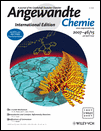Ruthenium Complexes Carrying Hydride, Dihydrogen, and Phosphine Ligands: Reversible Hydrogen Release†
This work is supported by the CNRS and the European network IDECAT.
Graphical Abstract
If it's meant to be, set it free: The bis(dihydrogen) complex 1, which is stabilized by two tricyclopentylphosphine ligands (PCyp3), can release up to ten hydrogen atoms, ultimately forming the new zerovalent ruthenium complex 2. This facile hydrogen release is totally reversible. The first step of the dehydrogenation process leads to various dihydride isomers of formula [RuH2{(PCyp2(η2-C5H7)}2].





